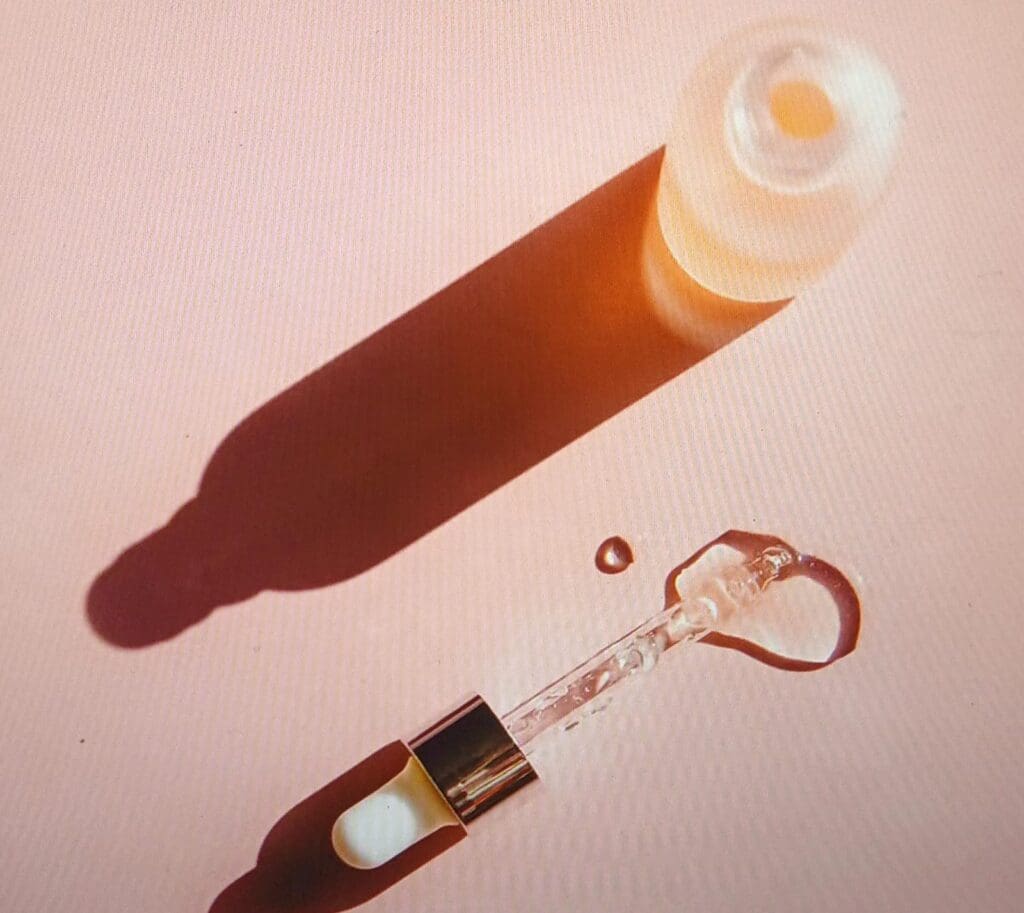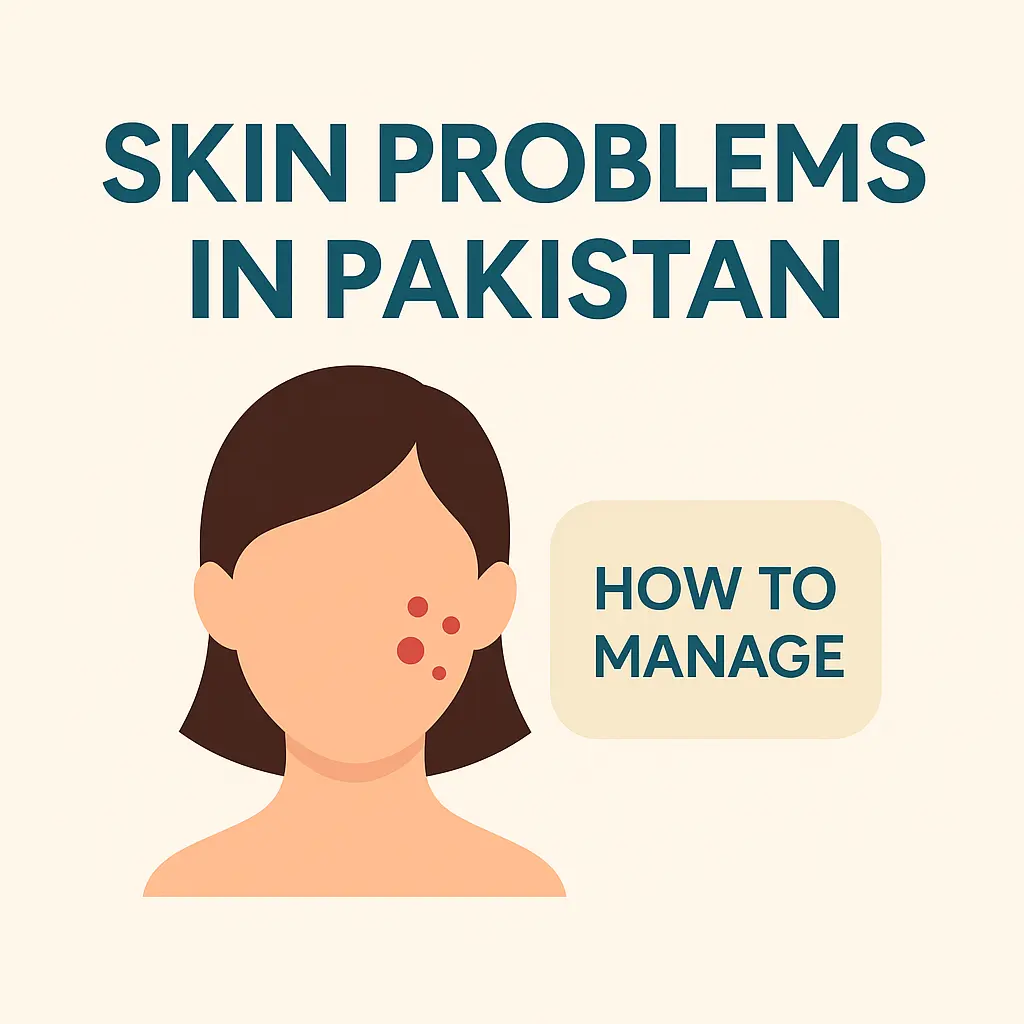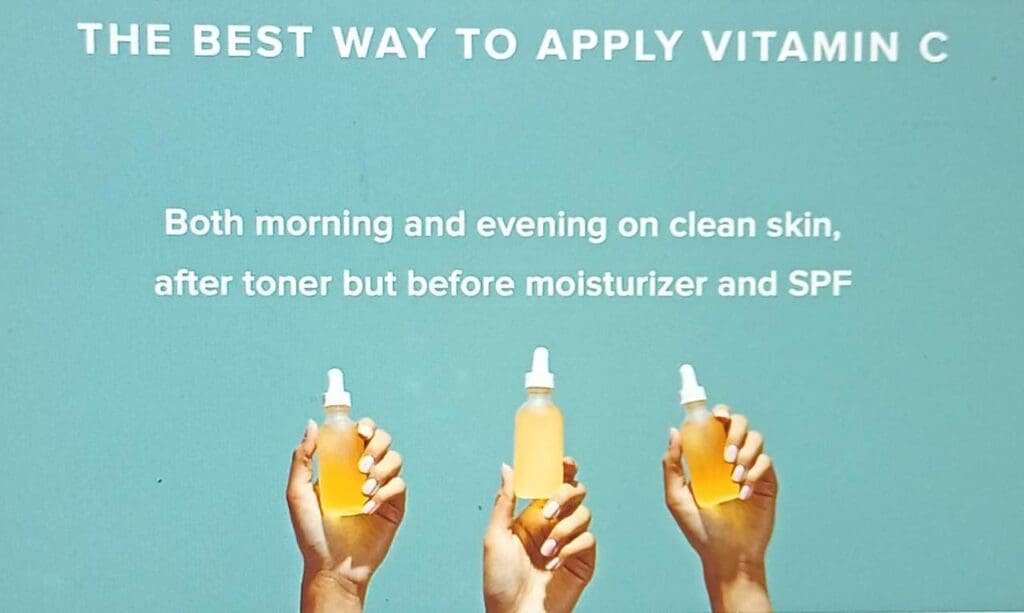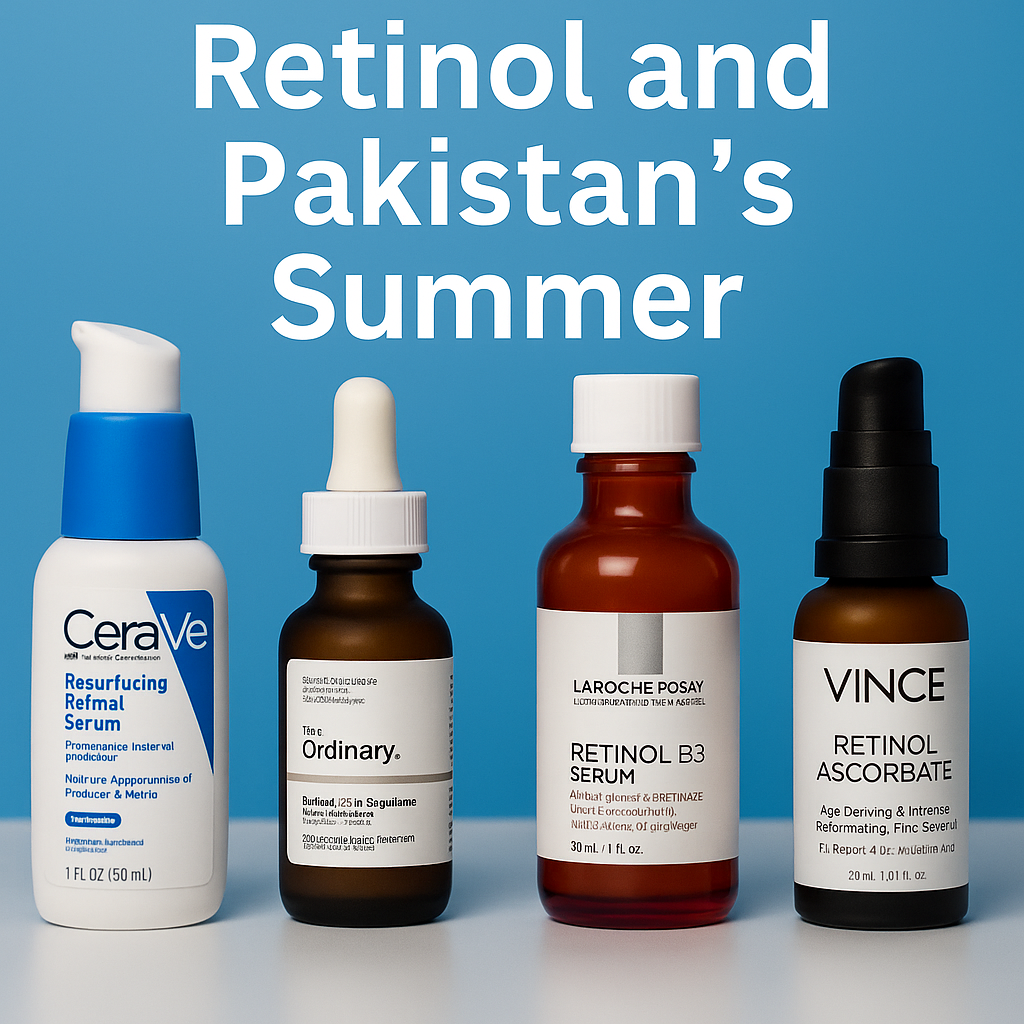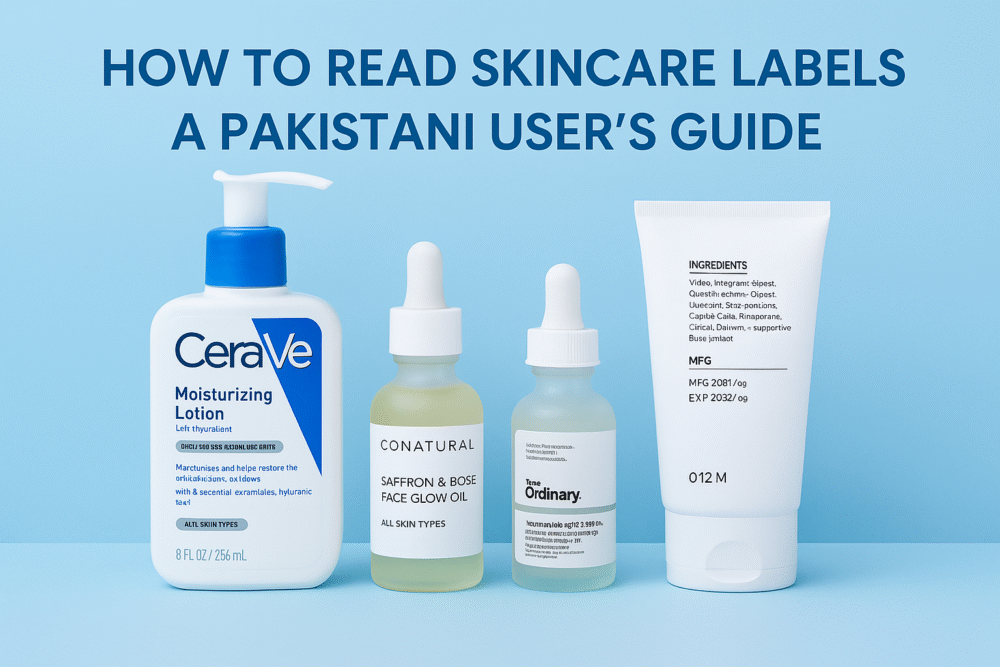
If you have ever flipped over a skincare bottle and felt completely lost — you are not alone. Between long chemical names, confusing expiry symbols, and flashy claims like “dermatologist tested,” it’s easy to get overwhelmed.
This guide is here to help. Whether you are just getting into skincare or trying to shop smarter in Pakistan’s tricky beauty market, here’s how to confidently read skincare labels — and avoid getting fooled.
1. Manufactured Date vs Expiry Date (MFG vs EXP)
In Pakistan, many skincare and cosmetic products come with both MFG and EXP dates — but not everyone knows what they mean.
- MFG = Date the product was manufactured
- EXP = Expiry date (usually 2–3 years after MFG)
Tip: If a product only shows the MFG, it’s still safe to use — just make sure it is within 30–36 months of that date.
Some imported products use symbols instead of full expiry dates. One common example is:
- PAO symbol (a little open jar icon) with something like “12M” or “6M” → This means “use within 12 months after opening.”
2. How to Understand the Ingredient List (INCI)
The ingredient list is one of the most important (and misunderstood) parts of a skincare label. Here’s how to break it down:
🔹 Order Matters
Ingredients are listed from highest to lowest concentration. The first few ingredients (usually 3–5) make up most of the product.
Example: If Water, Glycerin, and Niacinamide ( or any such active ingredient) are listed first — that’s a good sign the formula is effective.
🔹 Actives vs Fillers
- Actives = Ingredients that do the real work (Niacinamide, Retinol, Vitamin C, Salicylic Acid)
- Fillers/Base ingredients = Water, Propylene Glycol, Glycerin — supportive but not the main stars
Look for actives in the top half of the list, especially in serums and treatments.
Common INCI Names Explained
| Common Name | INCI Label Name |
| Vitamin C | Ascorbic Acid / Sodium Ascorbyl Phosphate |
| Vitamin E | Tocopherol |
| Retinol | Retinol / Retinyl Palmitate |
| Salicylic Acid | Beta Hydroxy Acid (BHA) |
| Alcohol | Ethanol / Alcohol Denat |
Don’t get scared by complex names — they often just mean simple, effective ingredients.
Watch Out for These in Sensitive Skin
- Fragrance / Parfum listed high up
- Essential oils like Lavender, Citrus, or Peppermint
- Comedogenic ingredients like Coconut Oil (not ideal in hot Pakistani weather)
3. Misleading Terms to Be Careful About
Brands love putting fancy claims on their labels — but some of them don’t actually mean anything. Here are some common ones to question:
🔸 “Dermatologist-Tested”
This just means it was tested by a dermatologist — not that it was approved or recommended. There’s no universal standard for this term.
🔸 “Non-Comedogenic”
It means “won’t clog pores” — but again, there is no regulation. Even comedogenic products can use this label. Always check the actual ingredient list.
🔸 “Natural” or “Organic”
These terms are not regulated in most countries, including Pakistan. Even a product with one plant extract and 20 chemicals can call itself “natural.”
4. Red Flags That May Signal a Fake or Low-Quality Product
Sadly, the Pakistani market is full of counterfeit or import-rejected skincare. Here’s what to watch out for:
❌ Poor Packaging or Label Quality
- Blurry fonts
- Inconsistent colors
- No batch or expiry printed
❌ No Barcode or Unscannable Code
- Legit products usually have barcodes (Even though bar codes can be copied)
- Fake ones often skip them or print random codes that don’t scan
❌ Price Too Good to Be True
- If a product is being sold at half the original price, especially from unofficial stores or pages, be cautious. It could be expired, fake, or redirected stock.
What a Good Skincare Label Should Show
Before buying any skincare — online or in stores — make sure the packaging shows:
- A MFG/EXP date or PAO symbol
- Ingredients list in INCI format
- Company/brand name and contact details
- Barcode (especially in international products)
- No spelling mistakes or suspicious fonts
Final Thoughts: Why This Matters
Reading skincare labels is not about being a skincare expert — it’s about protecting your skin, money, and health. Once you know how to decode the basics, you will avoid wasting money on products that are fake, expired, or just plain marketing fluff.

Education: University of Peshawar
Abrar Ahmad holds a Master’s degree in Chemistry and has been writing about skincare for over five years. With a deep understanding of ingredients and their impact on the skin, he enjoys sharing practical, science-based skincare advice. When not writing, he loves playing with his kids.
